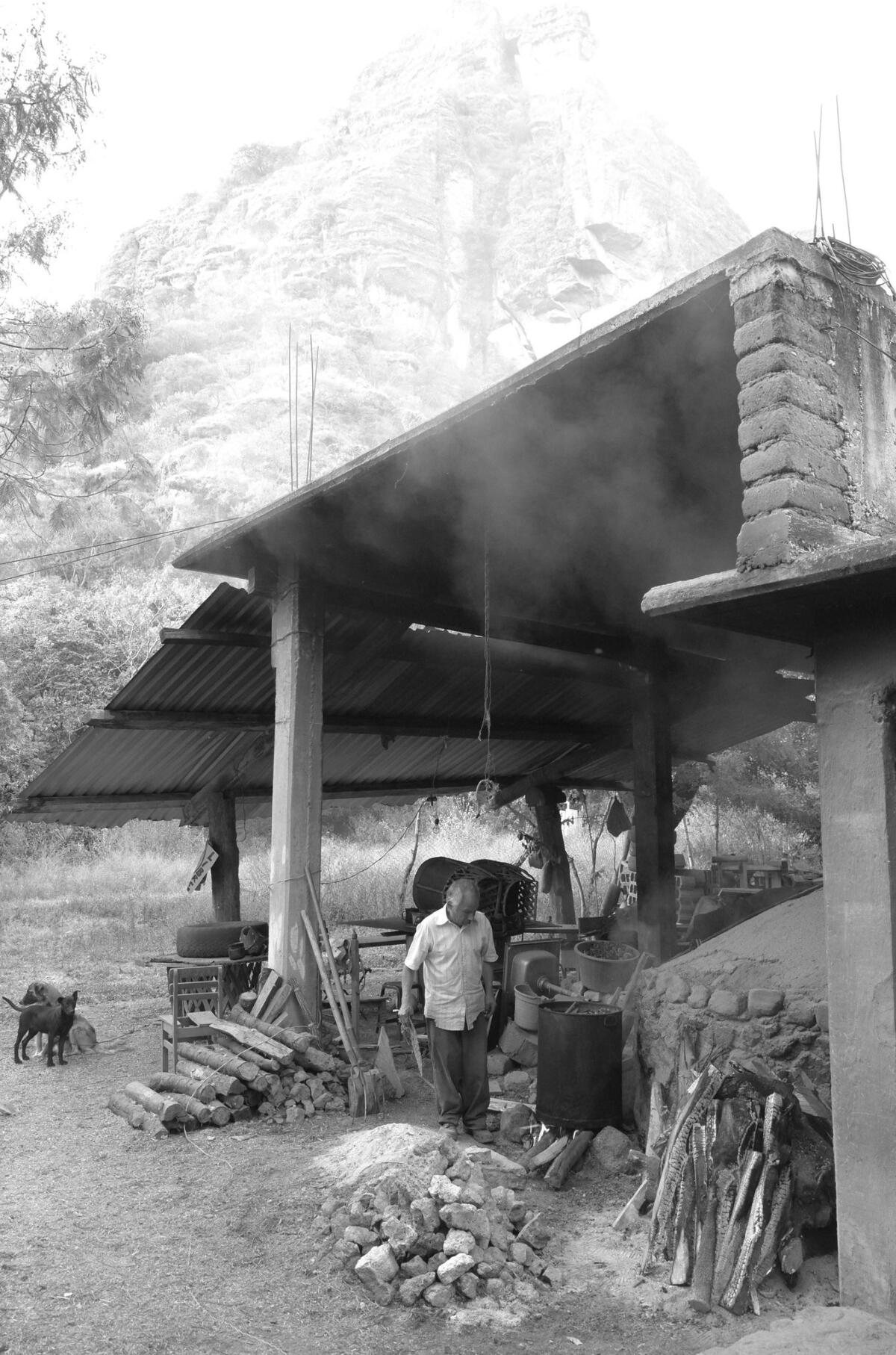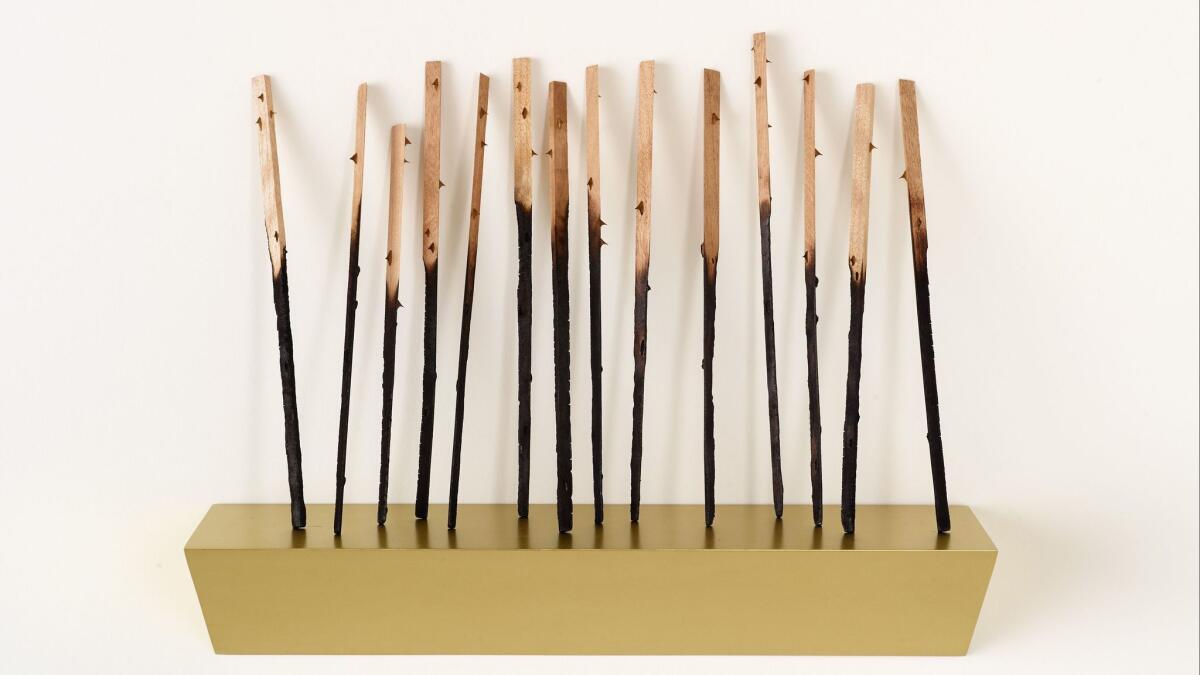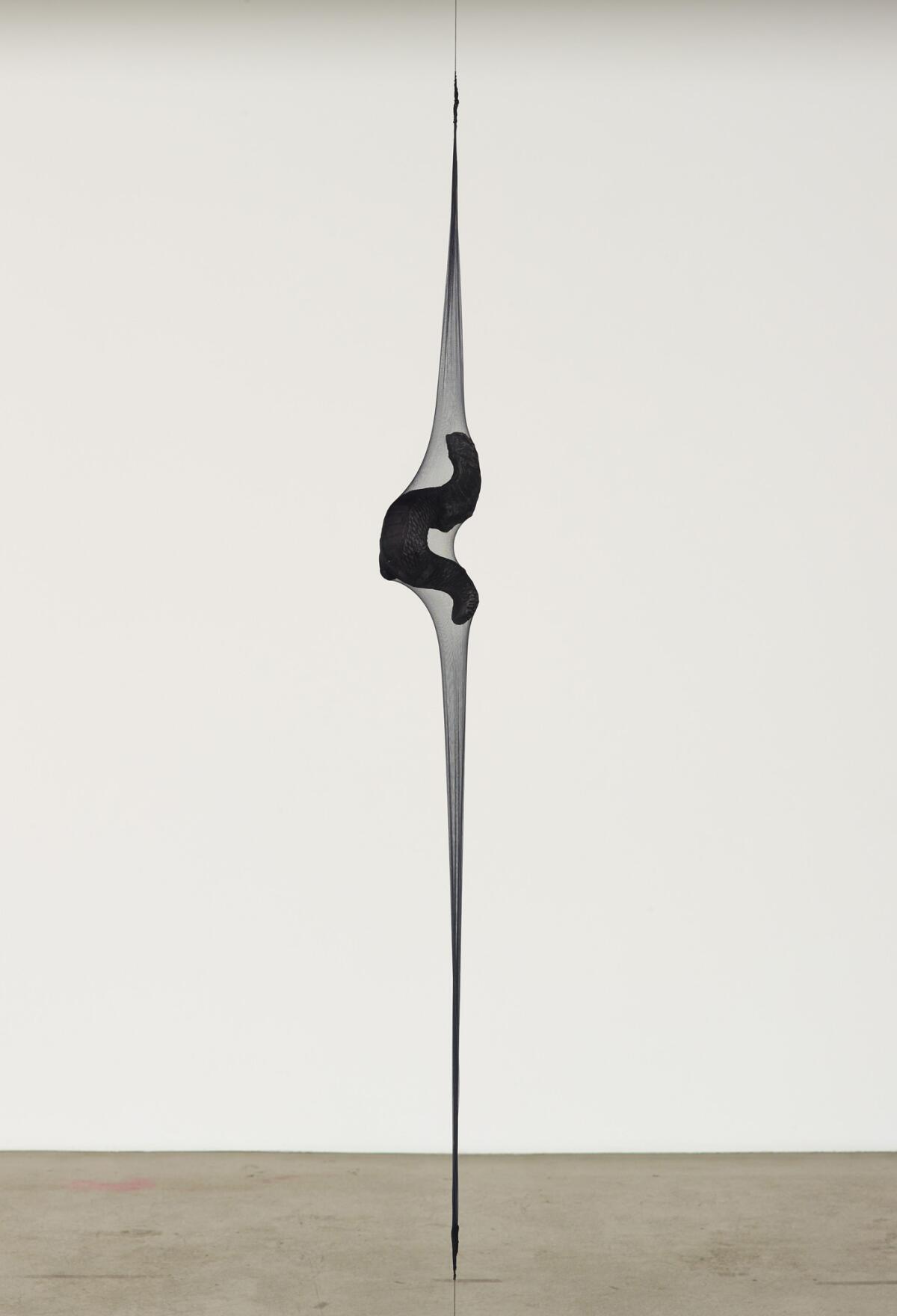Review: Sweat lodge, Audre Lorde, magical holograms: Three stellar art shows that pull you to another place
The size and sprawl of the L.A. art scene sometimes feel overwhelming, making it hard to chart a path that isn’t hopelessly scattershot. I would never wish it smaller or tamer, but sometimes one longs for a logic that connects the dots.
This month, three disparate exhibitions, in different parts of the city, form an unintentional constellation that highlights how art provides a path to moments and experiences that may be difficult to define but, nevertheless, carry spiritual and emotional resonance. Shows like these — full of wonder for the unknown and unknowable — keep art alive and intriguing.
Such transcendence is perhaps most salient in Mexico City artist Martin Soto Climent’s installation at Michael Benevento, near Koreatown. The exhibition uses the circular, somewhat tomb-like layout of the gallery to walk the viewer through an exploration of temazcal, a Mesoamerican sweat lodge purification ritual.
The show opens with a rapid-fire slideshow, projected on the wall in a darkened room, of black-and-white photographs of Don Pedro, a temazcal shaman, preparing for a ceremony: the stoking of the fire, the gathering and organizing of plants, the clutter of Don Pedro’s humble abode, replete with dogs dozing in the sun. Paired with a sporadic soundtrack of crackling fire and animal sounds, it is surprisingly effective at pulling you into another place.


The images often focus on several small, hanging objects that look like bones, feathers or plant matter. In the next two rooms, Soto Climent presents similar talismans in small glass boxes, encased in translucent black nylon or perched on smooth gold shelves. The objects are elemental in form: a lineup of half-burnt, thorny sticks; a charred wooden egg; a clutch of shiny black feathers; a carved wooden dragon. Their exact purpose and meaning can only be inferred — the blackened objects suggest cleansing fire; the egg, fertility and potential — but in isolating them, the artist turns them into relics of a sort, imbued with mysterious power.
Of course, in an art gallery, they are also aesthetic objects. He’s certainly not the first to do so, but Soto Climent uses the stripped down language of Minimalism in a refreshing way, not to reflect on art itself but to extend a decidedly pre-Modern tradition into an art gallery.
The show’s final room returns us to darkness. Painted black, the space features a video of a fire, more butterfly wings, and a large, charred metal cup that Don Pedro gave the artist. Its outside is battered and crusty, but the inside shines numinous in gold leaf.

Michèle Pearson Clarke
The ineffable also asserts itself in Toronto artist Michèle Pearson Clarke’s video, “All That Is Left Unsaid,” on view in the upstairs gallery of Ltd Los Angeles in the Mid-Wilshire district. The piece, which is just under 2½ minutes long, is edited from the documentary “A Litany for Survival: The Life and Work of Audre Lorde.”
Lorde was the black lesbian writer and activist who broadened and complicated notions of feminism, civil rights and gay rights from the 1970s until her death from cancer in 1992. She advocated for her fellow “sister outsiders” who often found themselves suspended between two or more competing identities.
Pearson Clarke’s video effectively silences Lorde, taking interview footage and removing what Lorde said to leave only the in between moments: the intake of breath, the clicking and sputtering of lips about to open. The viewer is kept in perpetual suspension; Lorde is always just about to say something, but we never get to hear what it is.

The device reflects a life cut short; it is an homage to Pearson Clarke’s mother, who also died of cancer. It also recalls the experiences of so many women and people of color who find their contributions routinely ignored or interrupted. But the work’s focus on the in-between spaces — the moments when speech is just about to appear, or has just subsided — also evokes ideas that Lorde championed. One didn’t have to choose between being black, gay or female. The experience of being an outsider — of being in between — stretched beyond and could enclose all three.
In fact, if you listen to the video with eyes closed, the almost-utterances become a soundscape, not unlike the scratching and crackling noises of Soto Climent’s temazcal preparations. They might be a strange Morse code or a secret language; in any case, they transport you to another space, one that lives alongside our own but that we seldom recognize.
Simone Forti
Another kind of fugitive reality can be experienced in Simone Forti’s exhibition of early holograms at the Box in the Arts District. Created in the mid- to late 1970s, these pieces are fascinating examples of a then-nascent 3D imaging technology, a predecessor to our various virtual environments. Like Soto Climent’s and Pearson Clarke’s works, the atmosphere they create is otherworldly.
Each image is projected in rainbow colors on an upright, curved pane of glass about 2 feet wide. The glass is mounted atop a wooden box, from which the hologram emanates. The images are mostly of Forti, a pioneer in avant garde dance and performance art, doing movement studies across the surface of the glass. Depending on where you stand, and at what height, the diminutive images may or may not appear; they only move when you do.
The result feels like the spaces in between Audre Lorde’s words. Forti’s images are contingent, sometimes partial, sometimes unrecognizable. You might have to crouch down or scoot around at a different angle to see them. They are fleeting, impermanent, as if always threatening not to exist. It feels as if there is something you can’t quite see.
All three of these shows assert there is always something unknowable, hovering just outside our grasp. They are exercises in humility, disabusing us of our illusions of knowledge, of mastery, of certainty. It’s hard to be dogmatic when we’re reminded there’s so much we don’t know.
Forti’s exhibition directly addresses this imperfection. The show’s title, “Time Smear,” refers to an inadvertent effect of this type of holographic photography: abstract arcs and blurs that often appear as Forti moves from one position to another. In one such image, she crawls and rolls across the floor. As the smears connect her various poses, her body at times looks like a serpent or a dragon: a magical, in between creature.
♦ ♦ ♦ ♦ ♦ ♦ ♦ ♦ ♦ ♦
Martin Soto Climent: Michael Benevento, 3712 Beverly Blvd., L.A. Through March 17; closed Sundays and Mondays. (323) 874-6400, www.beneventolosangeles.com
Michèle Pearson Clarke: Ltd Los Angeles, 1119 S. La Brea Ave., L.A. Through March 30; closed Sundays and Mondays. (323) 378-6842, www.ltdlosangeles.com
Simone Forti: The Box, 805 Traction Ave., L.A. Through March 24; closed Sundays-Tuesdays. (213) 625-1747, www.theboxla.com
ALSO
L.A. Opera and Joffrey Ballet give Orpheus some new moves, and a different ending
'Harald Szeemann': A rare, fascinating exhibition about the curator, not the artist
An unexpected choice for the Pritzker Prize
UPDATES:
March 22: This article was updated to reflect the one-week extension of Michèle Pearson Clarke’s show to March 30.
The biggest entertainment stories
Get our big stories about Hollywood, film, television, music, arts, culture and more right in your inbox as soon as they publish.
You may occasionally receive promotional content from the Los Angeles Times.







